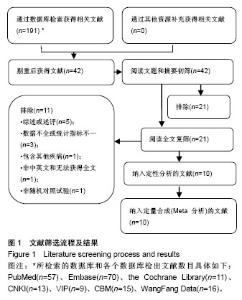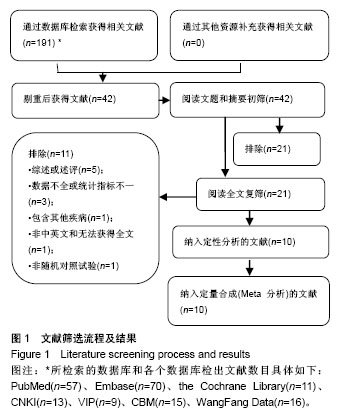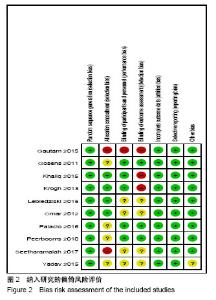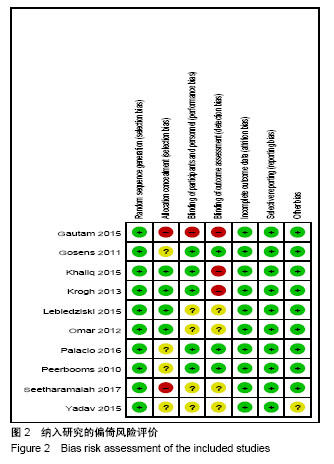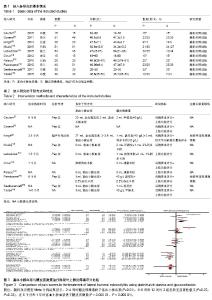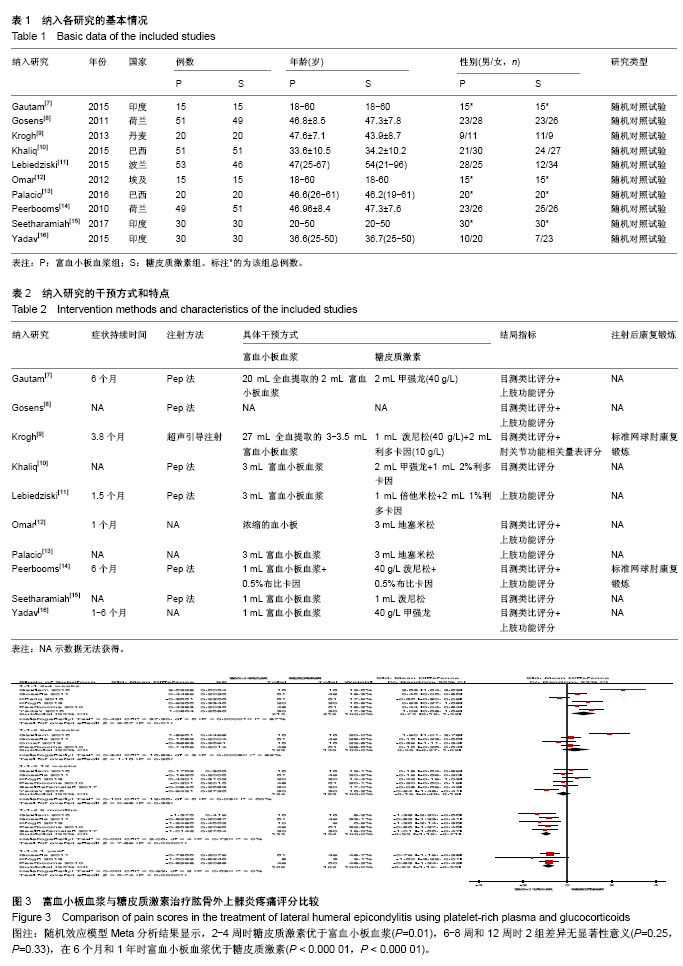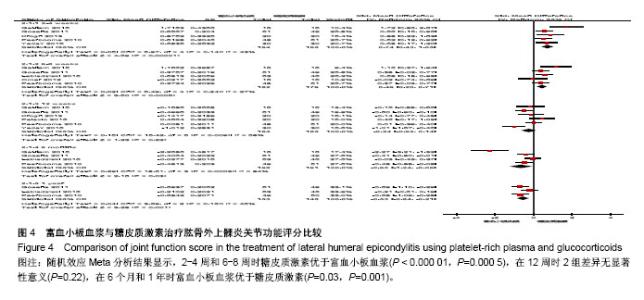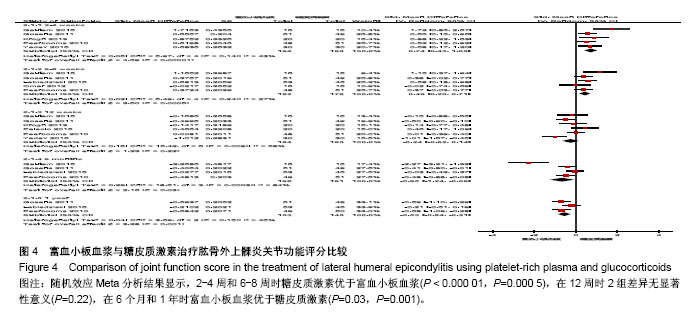| [1] Gregory BP, Wysocki RW, Cohen MS. Controversies in surgical management of recalcitrant enthesopathy of the extensor carpi radialis brevis. J Hand Surg. 2016;41(8):856. [2] Calandruccio JH, Steiner MM. Autologous blood and platelet-rich plasma injections for treatment of lateral epicondylitis. Orthop Clin North Am. 2017;48(3):351. [3] Newcomer KL, Laskowski ER, Idank DM, et al. Corticosteroid injection in early treatment of lateral epicondylitis. Clin J Sport Med. 2001;11(4): 214-222. [4] Xu B, Goldman H. Steroid injection in lateral epicondylar pain. Aust Fam Physician. 2008;37(11):925-926. [5] Marques LF, Stessuk T, Camargo IC, et al. Platelet-rich plasma (PRP): methodological aspects and clinical applications. Platelets. 2015;26(2): 101-113. [6] Higgins J, Green SE. Cochrane Handbook for Systematic Reviews of Interventions Version 5. 1. 0. The Cochrane Collaboration (Eds). Naunyn-Schmiedebergs Archiv für experimentelle Pathologie und Pharmakologie. 2011;5(2):S38. [7] Gautam VK, Verma S, Batra S, et al. Platelet-rich plasma versus corticosteroid injection for recalcitrant lateral epicondylitis: clinical and ultrasonographic evaluation. J Orthopa Surg. 2015;23(1):1-5. [8] Gosens T, Peerbooms JC, Laar WV, et al. Ongoing positive effect of platelet-rich plasma versus corticosteroid injection in lateral epicondylitis a double-blind randomized controlled trial with 2-year Follow-up. Am J Sports Med. 2011;39(39):1200-1208. [9] Krogh TP, Fredberg U, Stengaard-Pedersen K, et al. Treatment of lateral epicondylitis with platelet-rich plasma, glucocorticoid, or saline: a randomized, double-blind, placebo-controlled trial. Am J Sports Med. 2013;41(3):625-635. [10] Khaliq A, Khan I, Inam M, et al. Effectiveness of platelets rich plasma versus corticosteroids in lateral epicondylitis. J Pak Med Assoc. 2015; 65(11 Suppl 3):S100-104. [11] Lebiedziński R, Synder M, Buchcic P, et al. A randomized study of autologous conditioned plasma and steroid injections in the treatment of lateral epicondylitis. Int Orthop. 2015;39(11):2199-2203. [12] Omar AS, Ibrahim ME, Ahmed AS, et al. Local injection of autologous platelet rich plasma and corticosteroid in treatment of lateral epicondylitis and plantar fasciitis: Randomized clinical trial. Egypt Rheumatol. 2012;34(2):43-49. [13] Palacio PE, Ramos SR, Maiara K, et al. Effects of platelet-rich plasma on lateral epicondylitis of the elbow: prospective randomized controlled trial. Revista Brasileira De Ortopedia. 2016;51(1):90-95. [14] Peerbooms JC, Sluimer J, Bruijn DJ, et al. Positive effect of an autologous platelet concentrate in lateral epicondylitis in a double-blind randomized controlled trial: platelet-rich plasma versus corticosteroid injection with a 1-year follow-up. Am J Sports Med. 2010;38(2):255. [15] Seetharamaiah VB, Gantaguru A, Basavarajanna S. A comparative study to evaluate the efficacy of platelet-rich plasma and triamcinolone to treat tennis elbow. Indian J Orthop. 2017;51(3):304-311. [16] Yadav R, Kothari SY, Borah D. Comparison of local injection of platelet rich plasma and corticosteroids in the treatment of lateral epicondylitis of humerus. J Clin Diagn Res. 2015;9(7):RC05. [17] Coombes BK, Bisset L, Vicenzino B. Efficacy and safety of corticosteroid injections and other injections for management of tendinopathy: a systematic review of randomised controlled trials. Lancet. 2010;376(9754):1751-1767. [18] Judson CH, Wolf JM. Lateral Epicondylitis: review of injection therapies. Orthop Clin North Am. 2013;44(4):615-623. [19] Mishra AK, Skrepnik NV, Edwards SG, et al. Efficacy of platelet-rich plasma for chronic tennis elbow: a double-blind, prospective, multicenter, randomized controlled trial of 230 patients. Am J Sports Med. 2014;42(2):463. [20] Lhee SH, Kim JW, Jeon JB, et al. Prospective randomized clinical study for the treatment of lateral epicondylitis; comparison among prp (platelet-rich plasm), prolotherapy, physiotherapy and eswt. J Shoulder Elbow Surg. 2013;22(10):e30-e31. [21] Arik HO, Kose O, Guler F, et al. Injection of autologous blood versus corticosteroid for lateral epicondylitis: a randomised controlled study. J Orthop Surg. 2014;22(3):333-337. [22] Jindal N, Gaury Y, Banshiwal RC, et al. Comparison of short term results of single injection of autologous blood and steroid injection in tennis elbow: a prospective study. J Orthop Surg Res. 2013;8(1):1-7. [23] Jobe FW, Ciccotti MG. Lateral and medial epicondylitis of the elbow. J Am Acad Orthop Surg. 1994;2(1):1-8. [24] Lyras D, Kazakos K, Verettas D, et al. Immunohistochemical study of angiogenesis after local administration of platelet-rich plasma in a patellar tendon defect. Int Orthop. 2010;34(1):143-148. [25] Tarpada SP, Morris MT, Lian J, et al. Current advances in the treatment of medial and lateral epicondylitis. J Orthop. 2018;15(1):107. |
